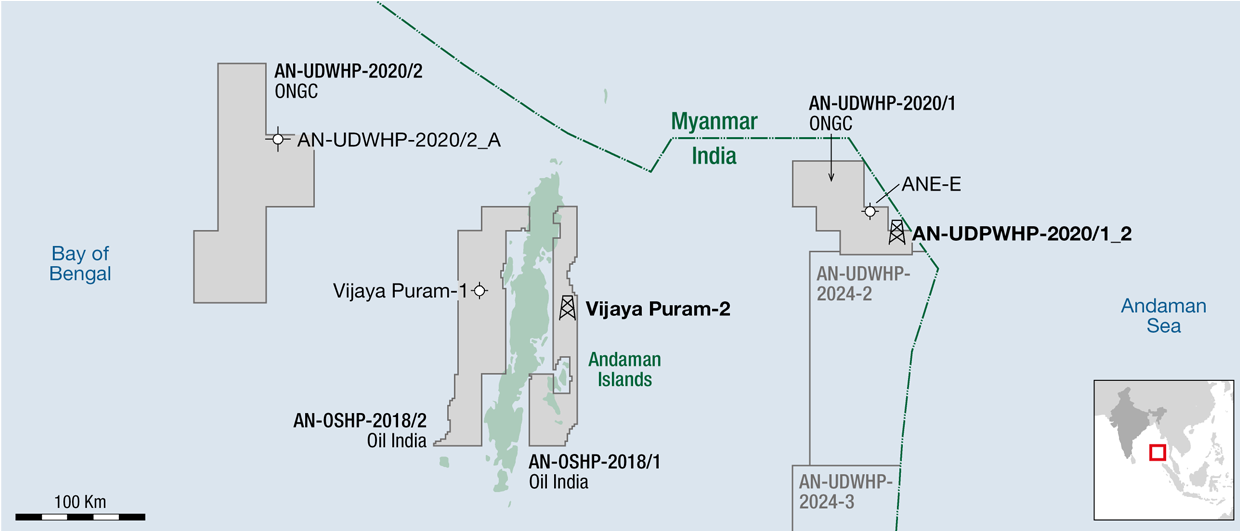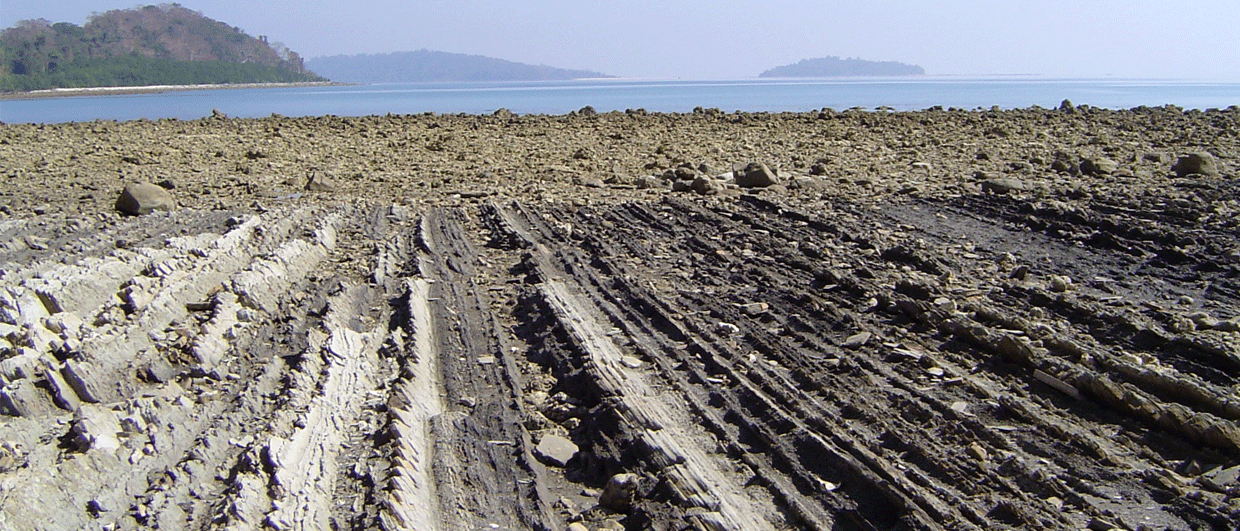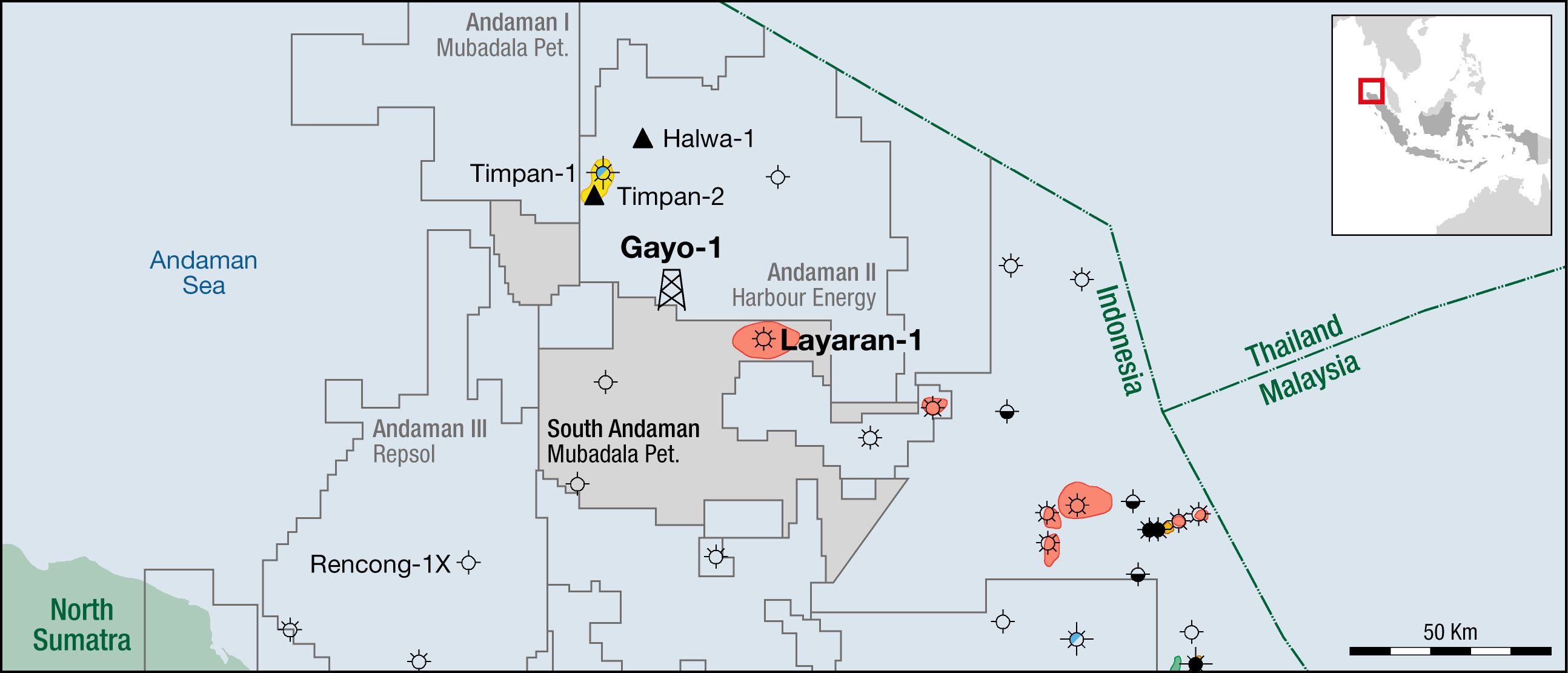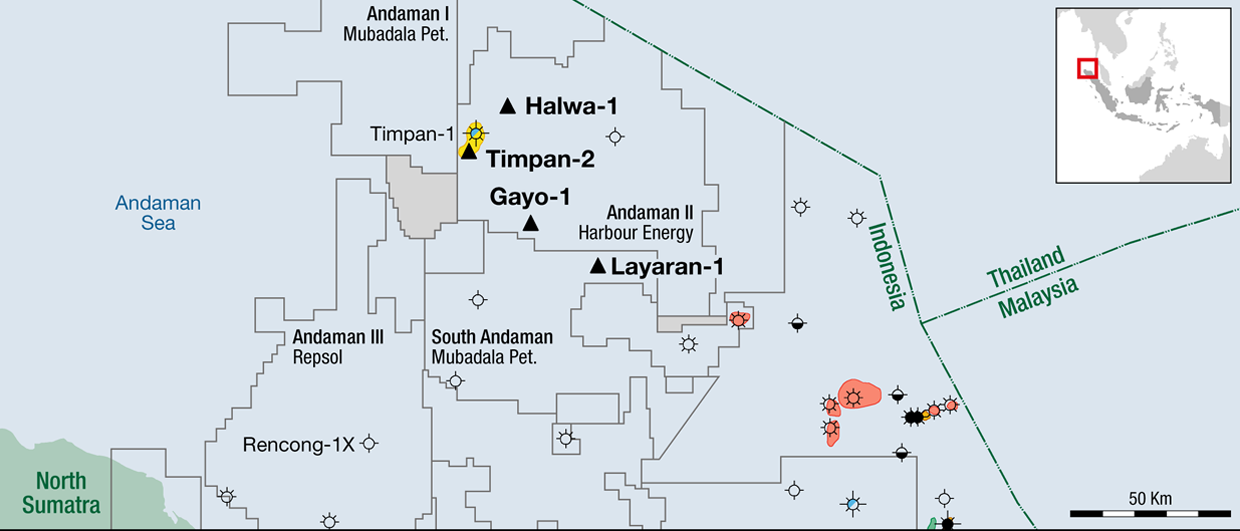In Southeast Asia, industry attention in recent months has been very much focused on the deep-water Indonesian portion of the Andaman Sea. This is a consequence of the Harbour Energy Timpan-1 gas and light oil/condensate discovery announced in July 2022. The play-opening wildcat was drilled to a total depth of 13,818 ft subsea and encountered a 390 ft gas column in Oligo-Miocene aged sandstone reservoirs.
The well, located in the Andaman II Block PSC, tested at a rate of 27 MMCFGD and 1,884 BOPD (58-degree API). Harbour is partnered in the PSC with Mubadala and BP (who had bought the KrisEnergy working interest in 2020).
Immediately after Timpan-1, Repsol spudded the much-awaited Rencong-1X wildcat in its Andaman III Block PSC. Petronas had farmed into this PSC, taking a 51% stake. The main play in this PSC, originally awarded to Talisman in 2009, are Late Eocene to Oligocene carbonate build-ups.
The Andaman Sea occupies a significant part of the Indian Ocean and has seen spurts of exploration activity over the last 45 years with mixed success. The vast sea covers parts of the offshore of India, Myanmar, Thailand and Indonesia, and running roughly north-south is the boundary between two tectonic plates.
Almost 70 years of exploration activity
First reports of oil and gas exploration in the Andaman Sea were in the late 1950s when the Indian national oil company, ONGC, undertook surveying and mapping. India’s first exploration well, AN-I-I in 1980, was a small gas discovery. In the Thai sector of the Andaman Sea, exploration started in 1968 when 17 blocks were awarded. Early operators included Amoco, Esso, Oceanic, Pan Ocean, Placid Oil, Union Oil and Weeks; however, subsequent drilling by Esso, Union Oil and Placid were largely unsuccessful. The last drilling attempt in the Thai sector of the Andaman Sea was Kerr-McGee’s Manora-1 in 2000. Later, PTTEP was awarded three deep-water Andaman concessions in 2007 as a consequence of the Thai 19th Bid Round but did not drill before relinquishment.
On the northern side of the Andaman Sea, the Zawtika, Yadana and Yetagun gas fields are located in Myanmar, while in the south the Arun, Kuala Langsa and North Sumatra Offshore (NSO) fields are situated in Indonesia waters. All of these are significant hydrocarbon fields.
Four deep-water wells
According to media reports, India’s ONGC is planning a drilling campaign in the Andaman Sea, which follows the acquisition of some 22,500 km of 2D seismic data under its National Island Exploration Project. Up to four deep-water wells are planned. In recent months, there have been press reports that majors ExxonMobil and Shell were in discussions to join ONGC in its deep-water Andaman Sea acreage.
India continues to push ahead with its efforts to explore the Andaman Sea, and in October 2022 it announced the offer of four ultra deep-water blocks as part of its Offshore Bid Round (OALP Bid Round-IX). These four blocks are undrilled and cover an area of over 53,000 sq km.
Future exploration activity in the Indian sector of the Andaman Sea will be watched closely by the Thailand Ministry of Energy, who may be seeking to promote acreage in this area in the near future. In the Indonesian sector, Harbour will be looking to continue its success with appraisal drilling on Timpan-1, plus additional drilling of other prospects, from late 2023. 3D seismic acquisition is also planned over the eastern side of the Andaman II PSC during late 2022, whilst the South Andaman PSC and the Andaman I PSC will also see some exploration activity in the near future; both are operated by Mubadala Petroleum, with Harbour as a 20% working interest partner.
Ian Cross – Moyes & Co





